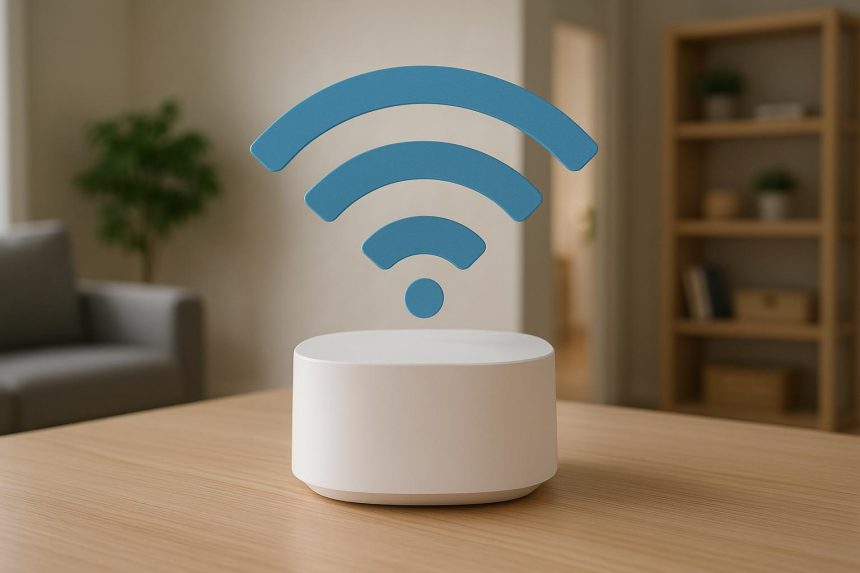There’s nothing more frustrating than finding the perfect spot to relax, only to watch your Wi-Fi drop out the moment you settle in. One minute you’re watching a show or on a video call, the next you’re waving your device around trying to find a signal.
Weak Wi-Fi is one of those small but constant annoyances that slowly wear you down — especially when you’re paying for high-speed internet that doesn’t seem to reach every room. The good news? Fixing it isn’t as complicated as it seems.
Before you go shopping for gadgets, it’s worth checking what’s available from internet providers in my area — sometimes a stronger plan makes all the difference. But in many homes, the issue isn’t your plan at all — it’s your setup.
Find Your Wi-Fi Dead Zones
Every home has them — the corners, basements, or upstairs rooms where Wi-Fi just disappears. These “dead zones” usually happen because walls, furniture, and even appliances block or absorb your router’s signal.
To spot them:
- Walk through your home with a phone or laptop and check your signal strength.
- Note where the connection drops or where speeds slow down dramatically.
- Pay attention to what’s between your router and those areas — often, it’s a simple case of too many obstacles.
Once you’ve mapped your weak spots, you can make more informed decisions about what needs fixing.
Place Your Router Like It Matters (Because It Does)
Most people put their router wherever the technician set it up — often tucked in a corner or behind the TV. But router placement can have a bigger impact on your signal than your actual plan speed.
Here’s how to optimise it:
- Keep it central: Place your router in the middle of your home, not the edge. Signals spread out in all directions.
- Avoid hiding it: Cabinets, walls, and furniture block radio waves. Keep it visible and off the floor.
- Watch for interference: Devices like microwaves, cordless phones, and Bluetooth speakers can interfere with Wi-Fi signals.
If your home is large or multi-storey, consider lifting the router higher — signals travel down better than up.
Use the Right Equipment for Your Space
A single router often can’t cover an entire home, especially if it’s older or built with dense materials like brick or concrete. In that case, you may need a little help from extra devices.
Here are your best options:
- Wi-Fi Extenders: Cheap and easy to install, extenders repeat your existing signal to reach further rooms.
- Mesh Wi-Fi Systems: These use multiple nodes that work together as one big network, giving you consistent coverage everywhere.
- Upgraded Routers: If yours is more than three years old, upgrading can dramatically improve both speed and range.
When choosing new equipment, check that it supports modern Wi-Fi standards (like Wi-Fi 6). It’s faster, handles multiple devices better, and is far more efficient.
Limit Bandwidth Hogs
Even the strongest signal can’t fix overloaded bandwidth. If everyone in your household streams, games, and downloads at once, speeds will suffer.
A few small tweaks can help balance usage:
- Schedule large downloads or updates overnight.
- Turn off devices you’re not using — smart TVs, consoles, and cloud backups quietly use data in the background.
- Enable Quality of Service (QoS) in your router settings to prioritise key activities like video calls or streaming.
If you’ve tried all this and your connection still struggles, your plan may no longer meet your household’s needs — a sign it’s time to upgrade.
Extend Wi-Fi Outdoors (Yes, It’s Possible)
More people are working, relaxing, and streaming outside than ever before. But patios, garages, and backyards are often the first places to lose signal.
To stay connected outdoors:
- Add a mesh node near the outer wall facing your outdoor area.
- Install weather-resistant access points designed for patios or verandas.
- Keep extension cords or cables tidy and safe from the elements.
With a little planning, you can turn your entire property into one seamless online zone — perfect for barbecues, garden movies, or just checking emails in the sun.
Know When It’s Time for a New Plan
Sometimes, no amount of repositioning or upgrading fixes the problem — because the real issue is speed. If your household has grown, or your internet habits have changed, your old plan might simply not keep up.
Run a few speed tests in different parts of your home and compare them with what your plan promises. If your speeds consistently fall short (and your equipment is fine), your provider might be throttling your connection during peak hours or your plan may be outdated.
In that case, switching to a faster, more reliable service can instantly solve problems you’ve been living with for years.
A Home That Stays Connected Everywhere
Getting reliable Wi-Fi in every corner of your home isn’t about luck — it’s about setup. A few smart adjustments to your router placement, equipment, and usage can eliminate dead zones and frustration in one go.
Start small: move your router, update your gear, and limit bandwidth-heavy tasks during busy times. If you still can’t get consistent coverage, it might be time to find a better plan that truly supports how you live and work.
Once everything’s running smoothly, you’ll wonder how you ever put up with a weak signal — and finally enjoy the kind of connection that just works, no matter where you are at home.
Lynn Martelli is an editor at Readability. She received her MFA in Creative Writing from Antioch University and has worked as an editor for over 10 years. Lynn has edited a wide variety of books, including fiction, non-fiction, memoirs, and more. In her free time, Lynn enjoys reading, writing, and spending time with her family and friends.















